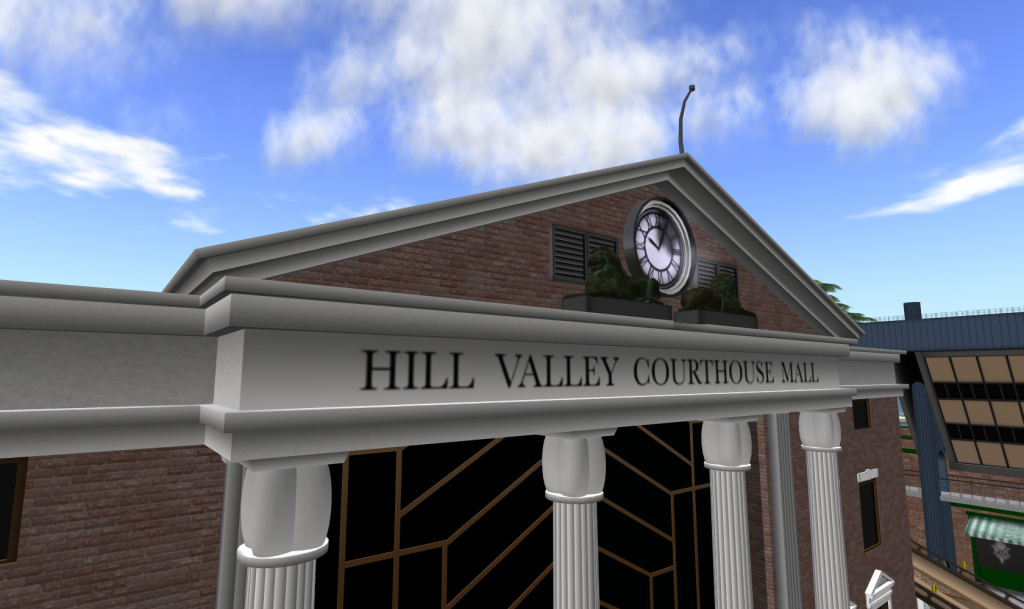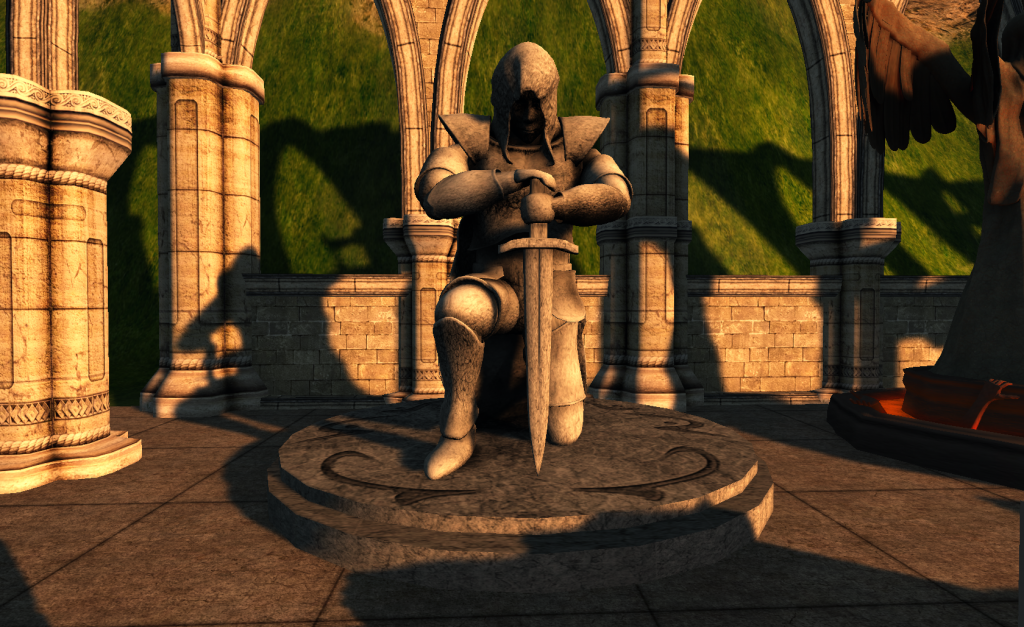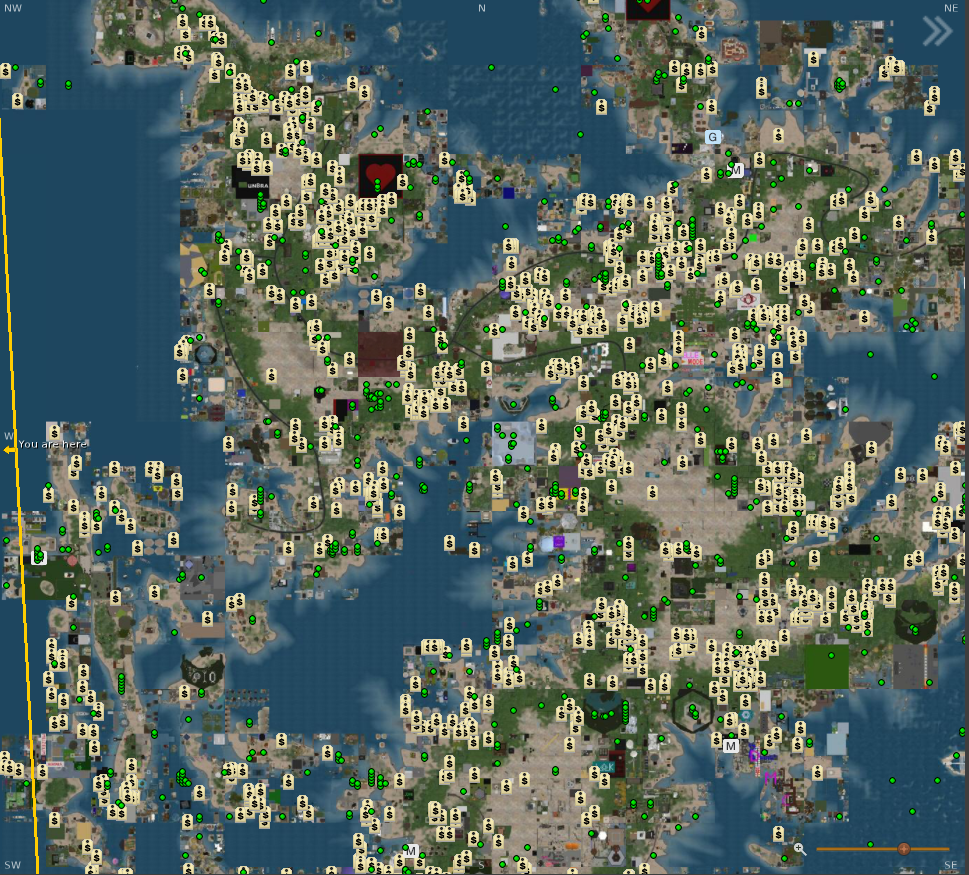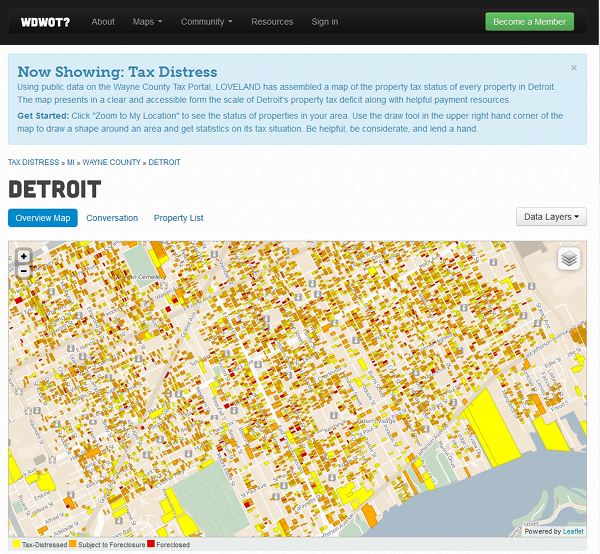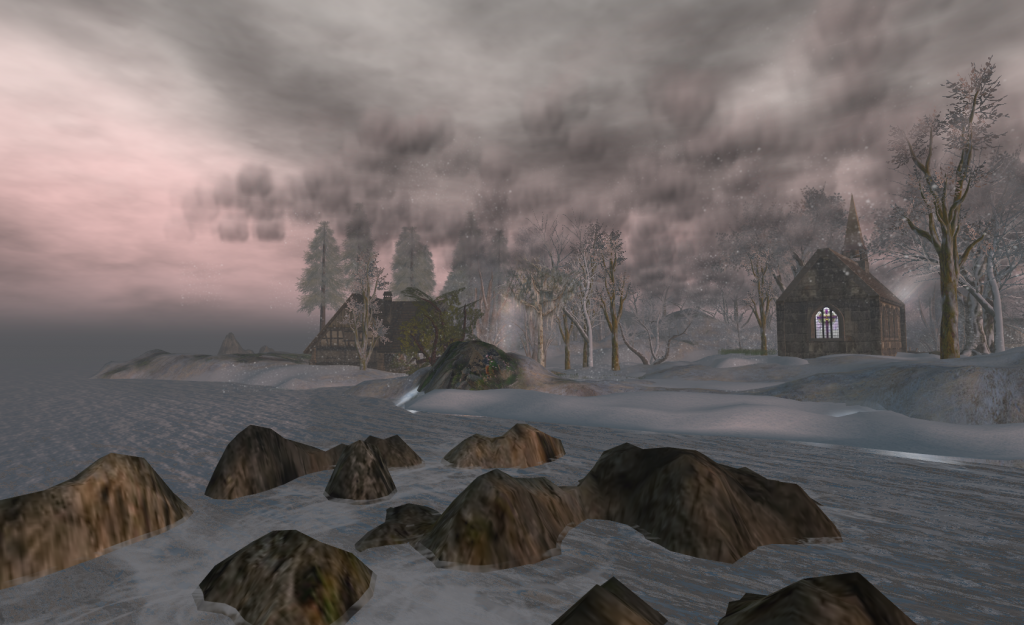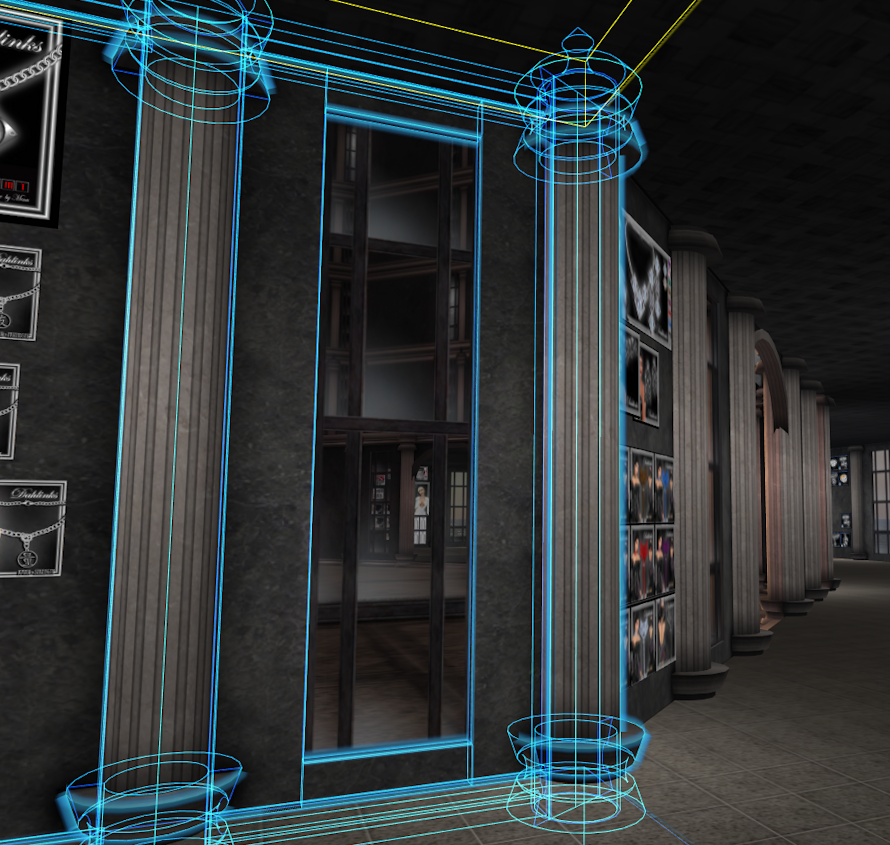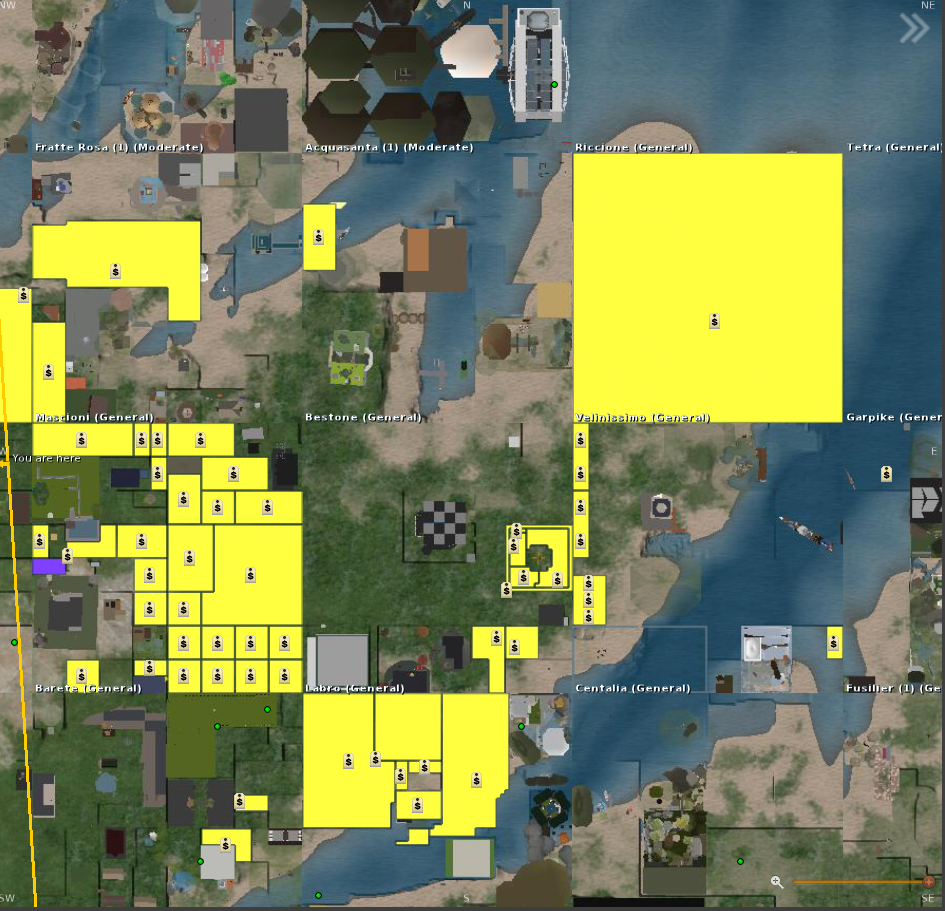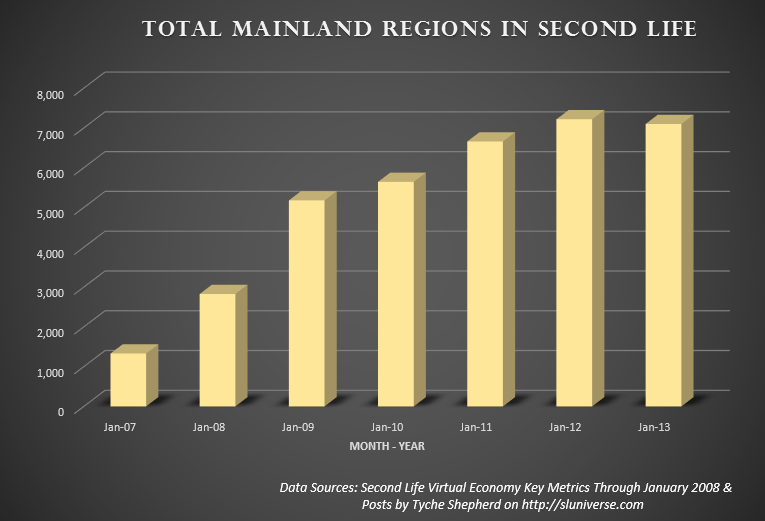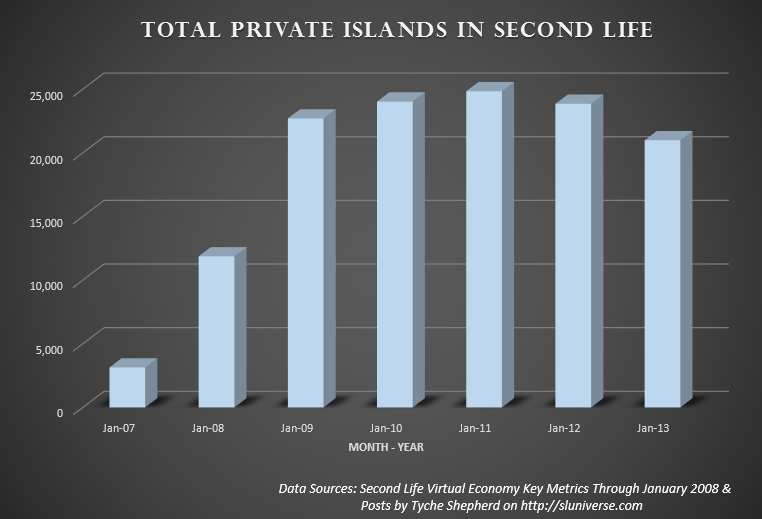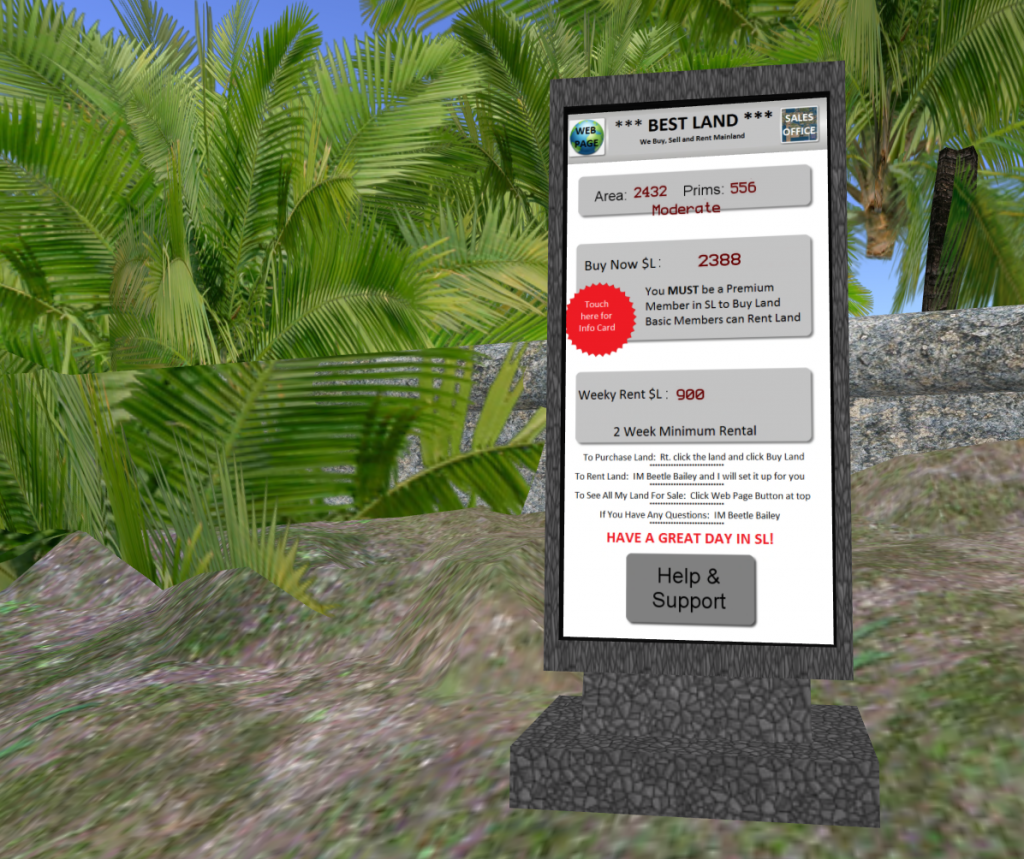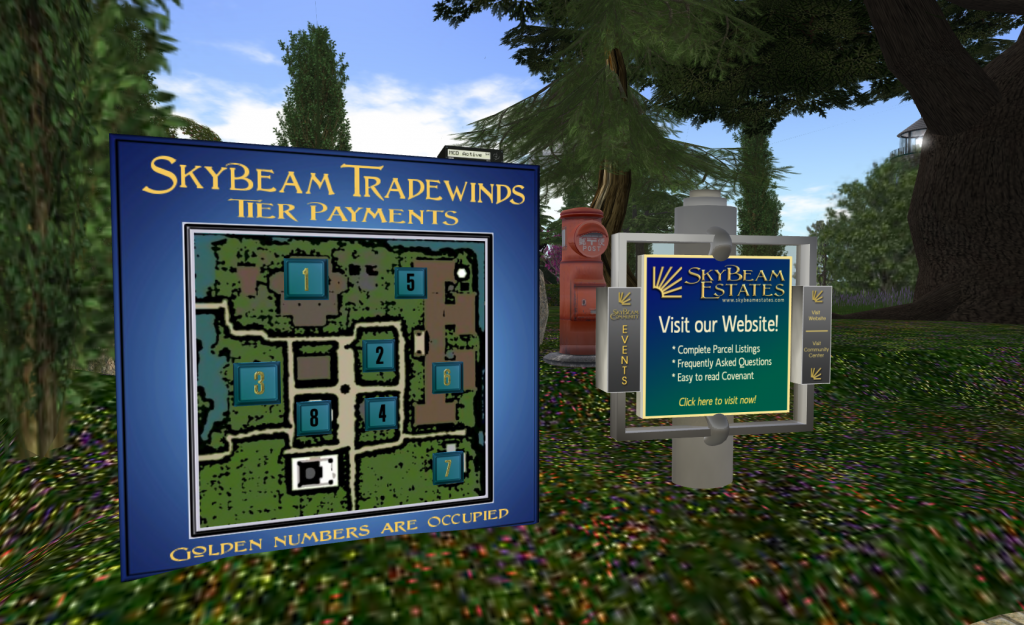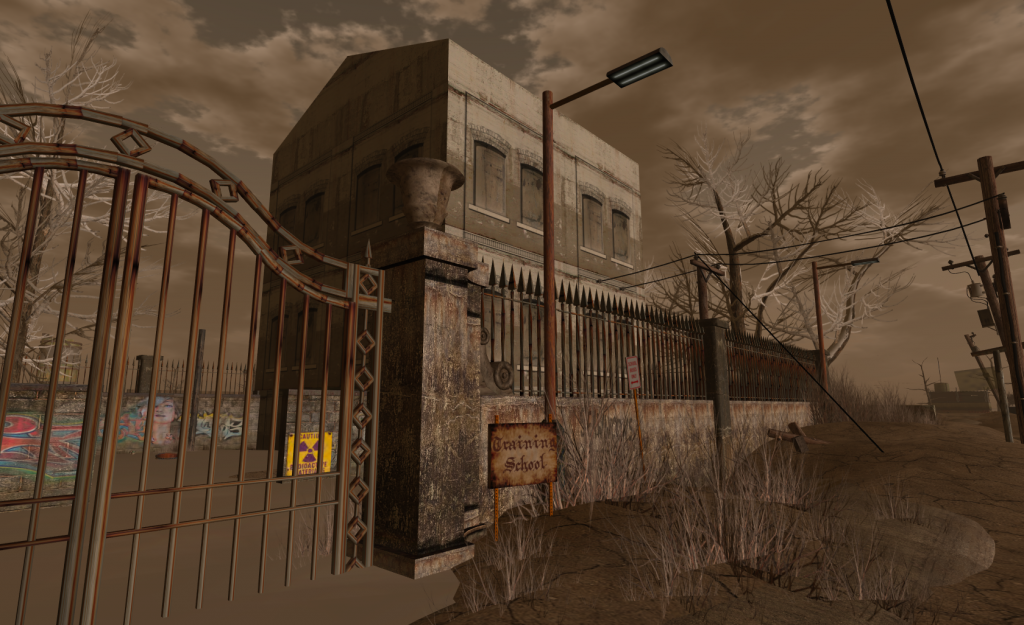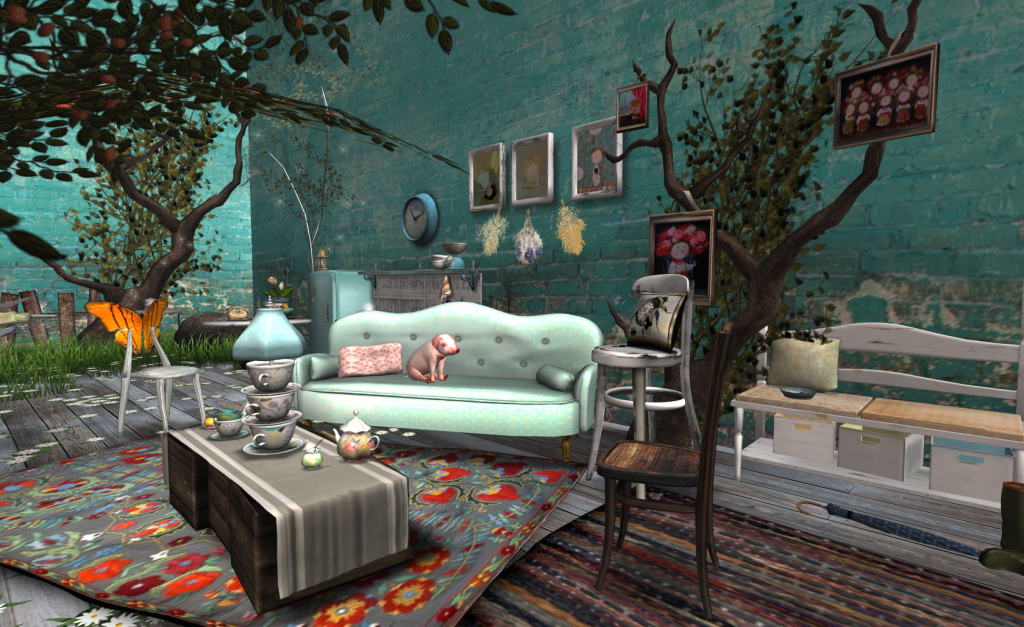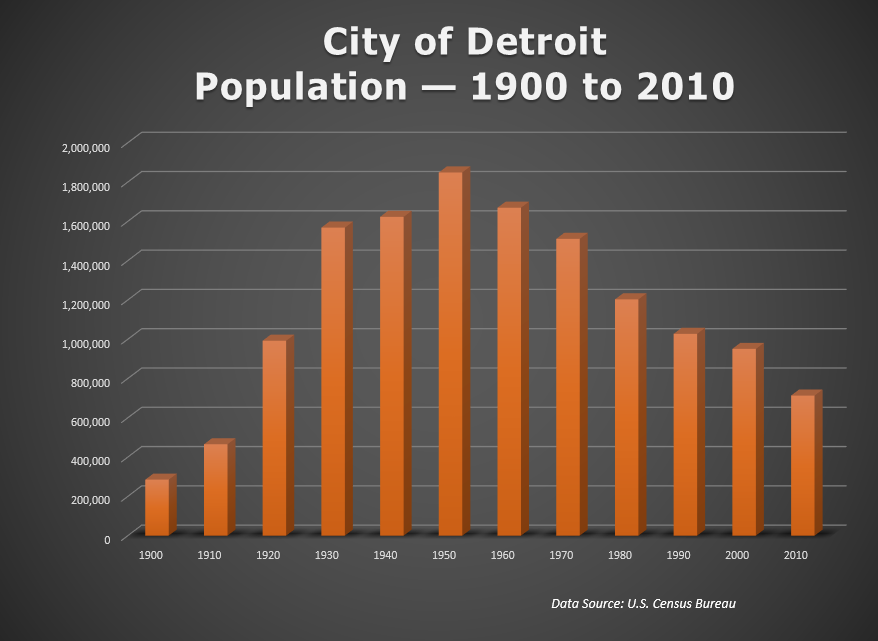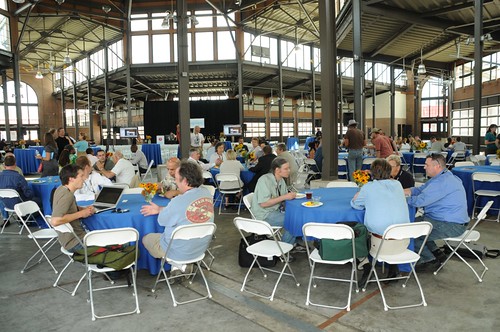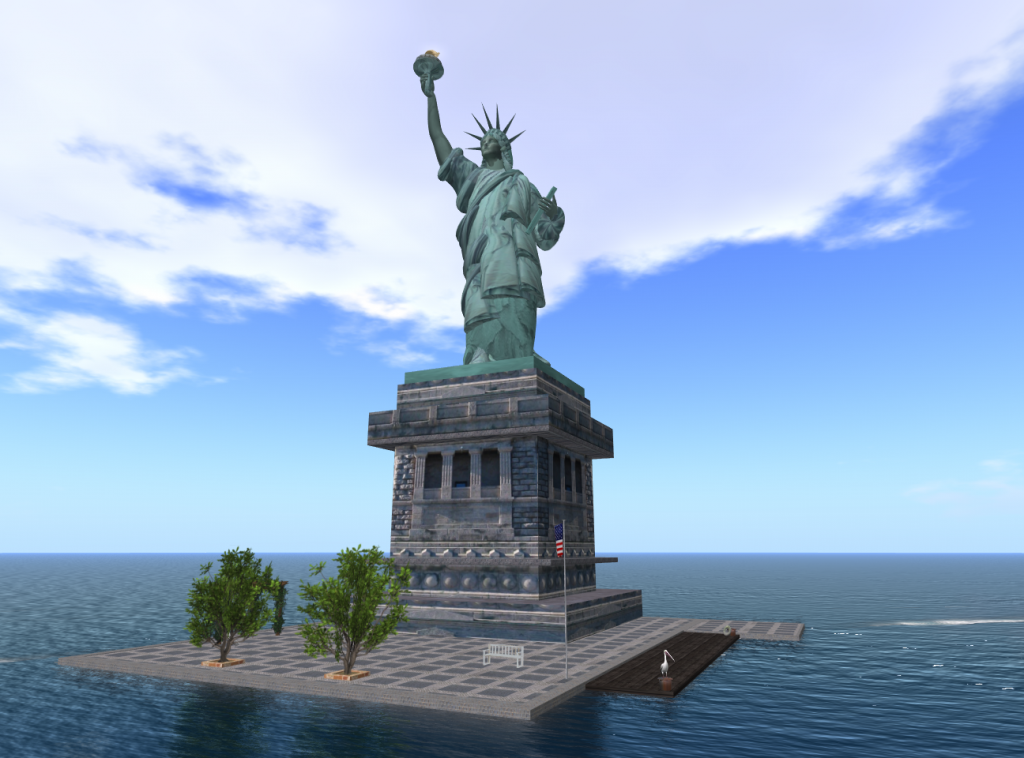
This is the horse and the hound and the horn,
That belonged to the farmer sowing his corn,
That kept the cock that crowed in the morn,
That waked the priest all shaven and shorn,
That married the man all tattered and torn,
That kissed the maiden all forlorn,
That milked the cow with the crumpled horn,
That tossed the dog,
That worried the cat,
That killed the rat,
That ate the cheese,
That lay in the house that Jack built.
An issue I recently stumbled upon is how to handle giving and taking credit for work done in the virtual space. The question brought to mind the Mother Goose rhyme at the beginning of this post and made me finally understand a possible underlying message within this silly verse. The question is for people who design and create in a virtual space, how much credit must be given to others who contribute to or have a part in supporting that work?
What does the law require?
A good place to start at answering the question of how much credit to give is to look at the law. (Disclaimer: I am not a lawyer so the information presented here is definitely not written for the purpose of giving legal advice, but instead to offer a background to exploring this subject.) Laws that govern this matter include those related to patents, trademarks, copyright, and DMCA. Here is a quick summary of each:
Patents:
According to the U.S. Patent Website: "A patent is an intellectual property right granted by the Government of the United States of America to an inventor “to exclude others from making, using, offering for sale, or selling the invention throughout the United States or importing the invention into the United States” for a limited time in exchange for public disclosure of the invention when the patent is granted." You must file with the government to be granted a patent and related rights. Someone might be allowed rights to the use of your patent for a fee. Credit might or might not be required under the conditions of any rights granted.
Trademarks:
Trademarks protect such things as the use of the name, title, slogan, or short phrase adopted and used by a person or entity. Again, credit might not be required by law but instead by some terms of permission granted for the use of a trademark.
Copyright:
Regarding copyright, here is the excerpt from the Copyright.gov website (U.S. law):
§ 102 . Subject matter of copyright: In general
(a) Copyright protection subsists, in accordance with this title, in original works of authorship fixed in any tangible medium of expression, now known or later developed, from which they can be perceived, reproduced, or otherwise communicated, either directly or with the aid of a machine or device. Works of authorship include the following categories:
(1) literary works;
(2) musical works, including any accompanying words;
(3) dramatic works, including any accompanying music;
(4) pantomimes and choreographic works;
(5) pictorial, graphic, and sculptural works;
(6) motion pictures and other audiovisual works;
(7) sound recordings; and
(8) architectural works.
(b) In no case does copyright protection for an original work of authorship extend to any idea, procedure, process, system, method of operation, concept, principle, or discovery, regardless of the form in which it is described, explained, illustrated, or embodied in such work.
The architectural works provision was added in 1990 and so buildings constructed after 1990 are now protected by this law. Although people retain the right to take photos or make other represenations of the building as long as what they create can be seen from a public place such as a street. No credit to the architect is required nor usually given. The interior can only be represented through photos or other mediums if it is a public building. Otherwise the architect must grant permission for someone to take a photo or make a video of it – credit might be required as a condition of that permission.
Digital Millennium Copyright Act (DMCA)
This law addresses the handling of copyright claims – a summary of the law can be found here: Summary of DMCA. It was brought about by changes in technology and to address treaty obligations made by the U.S. The act protects service providers from liability for copyright infringements made by those to whom they provide service.To receive this protection, the law requires service providers to have a process by which copyright holders can submit a notice informing the service provider there is a violation of their rights by someone using their service. And the provider must have a process in place to assess and handle the infringement including termination of services if a violation has been found to exist.
Summary
So in order to comply with the law, it is permission from a copyright owner that is required if the works fall into any of the categories listed above. Or someone might have to get permission from a trademark or patent owner which can often require a fee. Credit is something that would be required by the patent, trademark, or copyright holder as a possible condition of the permission granted.
What are people actually doing offline?
Government
Next, let's look at what people are actually doing in the industry. Most of the time, this follows the law because to do otherwise risks lawsuits. But in state and local government in the U.S. we rarely consider anything we create as copyrighted. Yet, while the copyright law exempts works by the federal government, works by state and local government are not. So it appears state and local governments are not addressing copyright issues – for most, there is a distinct lack of policy and process to handle copyrights as both a creator and as a user.
So, in practice, those of us in government regularly share and modify works by each other since we often need to create the same documents, details, standards, etc. Usually there is no credit given to anyone. An example of this is that just the other day I needed to come up with a listing of what is required on as-built drawings and asked other engineers in nearby cities for copies of their lists. They did not even think twice to send them to me, nor would I have if they had requested information from me. I modified the lists for our purpose, put our city logo on the new list, and sent it back out so it could be shared. If we were required to come up with original work each time something like this was needed, our work load and cost to do business would skyrocket. However, it appears this practice does not follow the law. (And this is another good example of how watching developments in the virtual space help to clarify and bring to light issues in the offline world. In this case, it appears this is an area where government needs to either change the law to match the practice or change the practice to comply with the law.)
AEC

In the engineering industry, the portfolios of consulting firms include many photos of projects designed and/or managed by that firm. Even if they did not pay for the project or manufacture the products used, or even perform the actual construction required to build the project, the portfolio presents the project as their work. And many times it does not list who owned the project and paid for it, all the companies or individuals who built it, or the manufacturers who created each product displayed in the photo. This is accepted by the industry. The understanding is that the project can be presented as theirs because they played a part in the design or project mangement of the work. Based on the copyright law, this practice appears to be legal and the industry understands what the presentation of the work means. This is also the case with portfolios from architects. Although since 1990, the architect has the sole legal right to use a photo of the composition of his work that is only visible in a non-public space. The architect is not obligated to list or credit who paid for the work, who built it, or who made all the products shown in the photo.
Interior Design
Another industry I think of related to virtual work is interior design. When you search portfolios of companies providing interior design services, they have many photos of interior spaces they have created through a composition of materials and products. I picked one randomly that seems to be a good representation of what is done throughout the industry – you can visit their site here: Interior Design portfolio. They do not list the creator of each element shown. And if they were required to do so, to what degree would be considered acceptable. Some might say similar to what is often done in a magazine showing interior decorated spaces: the furniture manufacturer, the artwork supplier/creator, etc. But should they also list where the carpet came from? The paint? Maybe. How about the drywall and mud and tape? The wood supplier for the molding and furniture? The fabric supplier? How about the farmer who raised the lambs who gave the wool for the fabric? And now we begin to create our own rhyme.
What are people actually doing online?
So let's move into the online space where the code of conduct and laws are still being developed. Here there are people contributing work at many levels. People create images or textures to be applied to 3D objects, mesh files to be used as the basis for 3D objects including avatars, sound and animation files, and scripts or programs to be embedded in the space or objects. At the macro level you have people who are the "interior decorators" or virtual "architects." They are the ones creating a composition of all the objects created by the first group. You also have photographers and machinimographers creating their own art works from these compositions and objects. Then at the micro level, you have the software developers, the host providers, and the companies providing your electricity and Internet connection. All of which are necessary in order for a 3D work to be created. To what level must credit be given to each contributing member? And what permissions must be obtained?
The permissions required are indicated in the copyright law. Yet, how does each of the works mentioned above fit into the copyright law? Are they all covered? Is an animation protected as a choreographic work? Are scripts and programs covered as a literary work? The others such as textures and mesh objects would probably be covered under the pictorial or graphics section of the copyright law. And photographers and machinimographers would have their work protected under the law. But they would have an obligation by the law to get permission from the other creators to be able to use that work in their photos or videos. Just giving credit is not compliance with the law – permission must be granted – credit is usually given as a condition of the permitted use. And finally how is the overall composition of all the elements covered?
It seems it is not required by law to gain permission from the entities providing the software, electricity, Internet connection, etc. that allow me to create and post my own work. This is also not done in practice, and this seems similar to what is done offline. For example, I don't have to get Microsoft's permission to publish a document I created in WORD. But I suspect few people who are posting photos and videos from Second Life and other virtual worlds are seeking the permission of the creator of each shape, texture, object, animation, etc that can be viewed in that photo or video. Of course some of this is because the permission has been granted through indirect means. So let's look at those:
Creative Commons Licenses
One way copyright owners can grant permission for use of their work is through a Creative Commons license. By attaching this type of license to your work, you can grant certain rights to others interested in using it without having to require them to contact you and get written permission. Sometimes this permission carries with it an obligation to give credit; sometimes it does not. While this seems to work well and has been an accepted practice, I always wonder how people are documenting this permission because at any moment someone can decide they don't like how someone is using their work and change their license. So how do you monitor the permissions attached to something you used? In my experience professionals who have worked in non-digital industries for years are still requesting written permission from me to use my work. And in the end, this is probably the safest approach to take.
Second Life Terms of Use
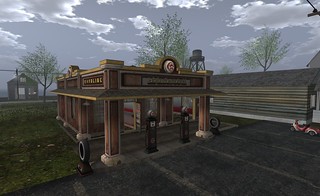
Another manner in which rights are granted to others for use of your work is through terms of services. When you join Second Life, you agree to abide by their terms of use. In uploading content to the service you are granting Linden Lab and other users certain rights to use your work. These rights can be found here: http://secondlife.com/corporate/tos.php. This is why people creating photos and machinima in that space do not need to seek out permission from each creator. It is viewed as a professional courtesy to give credit, and this is done for some items, but not all. And giving credit is not required by the terms of use.
OpenSim and other virtual worlds
Other virtual spaces like World of Warcraft function in a manner similar to Second Life in that they provide clear guidance of what is allowed. But I do not believe all virtual worlds created with OpenSimulator software have terms of use similar to those used by Second Life. If they do not and you plan to use photos or machinima or create compositions of objects with images from works created by others in these spaces, it appears the law puts the responsibility on you for obtaining permission from each creator whose work might appear in your creation. For some work, permission might already be granted through a Creative Commons license. I have released some work in this manner myself. And I have tried to document the permissions I have granted by including it in notecards or readme files stored in the objects or images. Scripts also often carry their own documentation of permission in the body of the script. But if there is nothing documtenting a Creative Commons license, it might be better to request written permission since people could change their mind at any time leaving you with no proof they had once offered their work with few to no restrictions. This is especially important if you are going to create a derivative work such as a photo, video, or composition like a full sim design and use it for anything other than personal use – even if you are giving it away for free. And if you hire someone to create work for your project, it would be best to clearly establish in a contract any permissions or rights granted.
So for myself, the approach I am going to take is to adhere to the copyright laws, check existing permissions, request permissions if necessary and document all received, and credit as required by any permissions granted to avoid having to guess at the level of credit needed or that is acceptable. And in granting permissions, I am going to try to really consider how I want my work to be used, establish permissions that clearly explain what can be legally done with my work, and try to continue to make it easy for people to document that permission for their records.
And finally I'm going to keep up with what is going on in the virtual space regarding copyrights, licenses, etc. by reading the Hypergrid Business site. Maria Korolov has done a great job reporting on issues related to this discussion. For a list of articles on her site touching on the topic you can visit this link: Hypergrid Business copyright-related articles.
 Today another question came up in our ongoing discussions about copyright and government. So I thought I'd post the scenario and question and see how others viewed this. It seems that many counties, at least in Illinois, arrange for the production of aerials and the creation of data such as parcel information, roadway and water features, and other infrastructure. They then allow other governmental agencies to use this information. Often this permission is granted through agreements. Sometimes it is offered for free and sometimes at an annual cost.
Today another question came up in our ongoing discussions about copyright and government. So I thought I'd post the scenario and question and see how others viewed this. It seems that many counties, at least in Illinois, arrange for the production of aerials and the creation of data such as parcel information, roadway and water features, and other infrastructure. They then allow other governmental agencies to use this information. Often this permission is granted through agreements. Sometimes it is offered for free and sometimes at an annual cost. 



